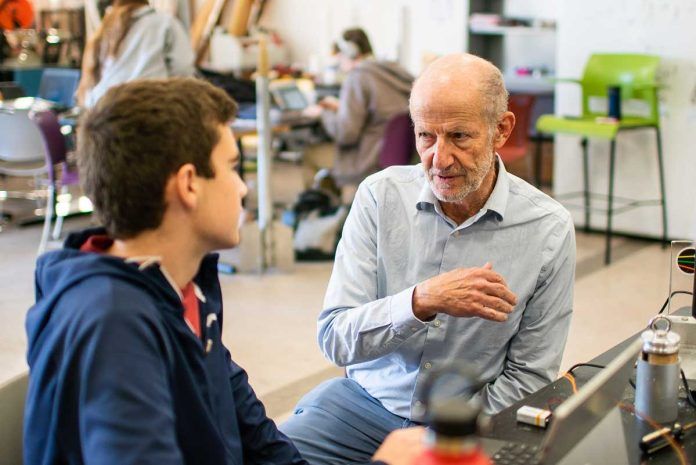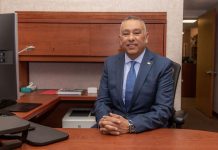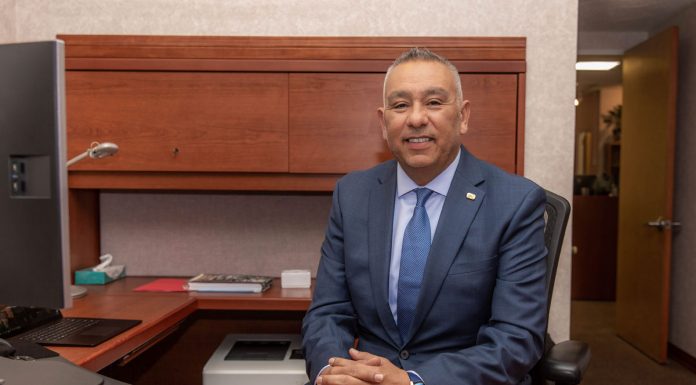High Tech High opened in September 2000 as a small public charter school with plans to serve approximately 450 students. HTH has evolved into an integrated network of sixteen charter schools serving approximately 6,350 students in grades K-12 across four campuses, including a campus in Chula Vista. When Larry Rosenstock co-founded High Tech High Foundation 25 years ago, he was determined to create a movement. A true pioneer in project-based learning, Rosenstock’s career journey was unique. With roots in carpentry and law, his hands-on experiences shaped the innovative educational philosophy that has made High Tech High a beacon for experiential learning.
Rosenstock went on to become a visionary educator, re-imagining K-12 learning. At High Tech High, he implemented an educational model that transcends the traditional classroom, integrating academic subjects with real-world skills in an environment where students learn by doing,
What set Rosenstock apart was his philosophy of integration, blending head and hand, ensuring that students of all backgrounds collaborate and succeed together, and positioning students in secondary school to excel in postsecondary education.
Over the years, High Tech High has transformed the lives of thousands of students across all of San Diego spanning from Chula Vista to North County, many of whom have returned as educators, continuing the cycle of mentorship and success. Today, as the High Tech High Foundation celebrates its 25th anniversary, the legacy of Larry Rosenstock’s vision is stronger than ever. His approach has become a model for educators nationwide, proving that when students are giving the tools to build their own future, they will succeed.
High Tech High Board of Trustees Chairman Gary Jacobs said High Tech High was born in 1998 by a group of business members to try to find a way to improve k12 education in San Diego due to the lack of engineers and wanted to create a homegrown workforce because they tend to be more integrated and engaged in the community.
“We got together for a year and a half, did a study around the world to see what was available, and chose a model where it was engaged learning, a program used in Denmark,” he said. “It was strong academics but applied what those academics were. Students understood what they were learning and why they were learning, how to communicate, how to identify and solve problems, and to work in teams. All the things you need when you work out there in the workforce.”
Jacobs said Rosenstock was working with Price Philanthropies at the time and developed a couple of schools with a different private school model that reported to SDSU.
Jacobs said Rosenstock and he came in together and he has been an educational leader in 22 years with the school.
“Larry came in and talked about the charter school system where we are still academic, still a public school and paid for by the state of California, and basically exempt from part of the educational code,” he said. “It was to create lab schools with a new way to educate students. So, we chose to go charter.”
Jacobs said Rosenstock came in the next day and asked to be the director, which Jacobs said made the possibility of the school’s success from 50/50 to 90/10.
“That was the beginning of our partnership on how we were going to create this institution and really help,” he said. “Our idea at first was to create one school within the San Diego Unified system. It was an independent school, but under San Diego Unified. Then we helped San Diego Unified in helping in their educating.”
“They said even with no staff, not students, they believed in the design of our schools,” he said. “The design for the schools is that the education is tailored to the students making sure they had what they needed to succeed. It had a real-world connection. And that teachers and faculty worked together to create work activities and projects.”
Jacobs said they opened a school in Philadelphia, Albuquerque, NM, Chicago, but noticed being so far away, they had a tough time keeping the quality of education, so they brought all campuses back to San Diego. So, they opened High Tech High, High Tech Middle, High Tech High International, High Tech High Media Arts, and now High Tech is K-12 with 16 locations in San Diego County.
“From our first class of 150 students, we now have over 6,000 students. We originally had a staff of 12 and now we have 400 teachers, 400 support staff, our own central kitchen, we are a 100 million operation, and at the same time we have opened our Graduate School of Education so we can distribute everything we have learned here and allow other schools and school districts to visit our schools, learn more about us. We can help them through consulting, and they can open their own versions of High Tech High in their communities, which has been very successful,” he said.
Rosenstock retired during COVID, but during that time he was able to create the culture of the school to get incoming faculty to understand what High Tech High is and what is expected from its faculty.
“It is about what passions the teachers have and how we bring that out in projects that meet the same standards, but at the same time engage the students,” he said. “He was also extremely good at telling the story of High Tech High in the community, locally, nationally, and internationally.
Jacobs said the Gates Foundation took notice and gave them $6 million to create 10 more schools. He was very much into the school system and known by the students and faculty, able to keep that culture going.”
Jacobs said the graduate school is accredited to grant master’s degrees, school and school classroom leadership, and it coordinates with UC San Diego for students who want to earn their PhD. He said they get about 5,000 schools to come here to see its program. He said Rosenstock and he are very interested in the Israeli school system, so they began bringing 30 to 50 Israeli educators, both Jewish and Arab to San Diego a year to learn about the system, shadowing teachers and administrators. They learn what they can apply to their school system and High Tech High sends them consultants to provide more in-depth knowledge of what the program does for students. He said now, there are 120 schools in Israel, Friends of High Tech High, that do some form of High Tech High.
Jacobs said here in San Diego, other charter schools have been started by its faculty and community members, seeing High Tech High as a model.
“So, we have created much more choice for students in San Diego, and also competition for ourselves, so we stay on the cutting edge,” he said. “We want to continue to be able to be a leader in this engaged education space. High Tech High is really a equity project in how we create the environment so all students, regardless of their background, socioeconomic or educational background, that they all feel like they belong, and they all feel they have agency about their education. We want to be a resource all over the country and all over the world.”
In the upcoming 25th Anniversary Gala, taking place on Saturday, Oct. 19, at 6 p.m. at Liberty Station, the Foundation will be honoring CEO Emeritus Larry Rosenstock for his groundbreaking contributions to education.
Visit www.hightechhigh.networkforgood.com/events/72622-high-tech-high-foundation-gala for more information.














